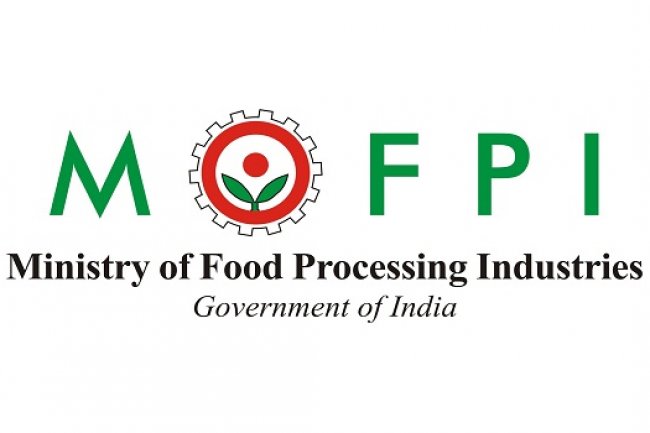New company and startup grant programmes offered by the Indian government
Here are several government programmes that can assist startups and early-stage businesses secure seed investment from Govt of India. Prime Minister’s Employment Generation Program, Weavers Mudra Scheme, Pradhan Mantri Mudra Yojana, Stand Up India Scheme

All the Type of Indian government grants for new businesses and startups
1. Prime Minister’s Employment Generation Program (PMEGP)
About PMEGP
The Ministry of Micro, Small, and Medium Enterprises administers the PMEGP programme (MoMSME). The Khadi and Village Industries Commission (KVIC) serves as the nodal body at the national level for the implementation of the programme. It is executed at the state level by implementing agencies, such as State KVIC Directors, State Khadi and Village Industries Board (KVIB), District Industries Center (DIC), and Coir Board.
Benefits of PMEGP
1. New microenterprises in non-farm sectors can benefit from a bank-financed subsidy scheme.
2. Margin Money subsidies on Bank Loans vary from 15% to 35% for projects up to Rs. 50 Lakh in manufacturing and Rs. 20 Lakh in the service sector, respectively.
3. In rural regions, the margin money subsidy for beneficiaries of special categories such as SC/ST/Women/PH/Minorities/Ex-Servicemen/ NER is 35%, and in urban areas, it is 25%.
Eligiblity Criteria under PMEGP
1. Anyone above the age of 18 is eligible.
2. There will be no limit on the amount of money that can be used for project support under the PMEGP.
3. For projects with a budget of up to ten thousand dollars in the manufacturing sector and five thousand dollars in the service sector, no formal education is necessary.
4 .When setting up a manufacturing project costing more than Rs.10 lakh or a business/service project costing more than Rs.5 lakh, beneficiaries must hold an educational qualification equivalent to the eighth standard or higher
a) Self Help Groups (including those from the BPL provided that they have not received benefits under any other Scheme);
b) Institutions registered under the Societies Registration Act, 1860
c) Production Co-operative Societies.
5. A unit that has already received government subsidy under any other plan of the Indian federal or state governments (such as PMRY, REGP) is ineligible for this programme.
Other things about PMEGP
1. In rural and urban regions of the country, new self-employment ventures/projects/micro enterprises will be put up to create new job prospects.
2. Reunite rural and urban jobless youngsters and dispersed traditional craftspeople by providing as many self-employment options as feasible on their own turf.
3. To stop rural youth from migrating to metropolitan areas by providing a major section of traditional and potential craftsmen and jobless rural and urban youth in the country with continuous and lasting work.
4. The ability of craftsmen to earn a living wage and to contribute to a rise in rural and urban job growth.
2. Weavers Mudra Scheme (WMS)
About Weaver Mudra Scheme
In order to help handloom weavers, the Weaver MUDRA programme provides financial aid through weaver's credit cards or term loans.
Handloom weavers who have been recognised for financial help might use it for working capital, equipment purchases, or both.
Eligiblity Criteria under Weaver Mudra Scheme
The weaving operation of handloom weavers
Secondly, Weaver Enterprises
The third type of group is the self-help or joint-liability one.
Fourth, primary hand-loom weavers' co-operative societies
Handloom Weavers' Co-operative Societies at the Pinnacle
Producing firms developed by handloom weavers, such as those encouraged under the SITP or other initiatives of the Ministry of Textile, such as clusters, megaclusters, and handloom parks
Other things about Weaver Mudra Scheme
1. Assets like raw materials, completed goods, equipment and plant & machinery are hypothecated as collateral for bank loans and margin.
2. Credit guarantee: the loan must be protected by the CGTMSE/CGFMU credit guarantee programme.
3. A maximum balance margin money amount of Rs 10,000 must be paid by the borrower, with the government of India bearing margin at 20% of the project cost.
4. Support for the handloom industry via 6% low-interest loans. The maximum amount of interest that may be subsidised would be 7%.
3. Pradhan Mantri Mudra Yojana (PMMY)
About Pradhan Mantri Mudra Yojana
The Prime Minister PMMY (MUDRA YOJANA) is a plan of the Indian Government (GoI) for giving Mudra Loans up to Rs. 10 lakhs to small and micro businesses that are neither corporations or farmers. Mudra Loans are available in the following three categories:
To a maximum of Rs. 50,000 in Shishu
Category: Kishore, 50,001 to 5 lakh rupees
More than Rs. 5,00,000 Tarun Category
Small and micro businesses in the following industries are eligible for Mudra Loans: Trading, Manufacturing, and Service Sectors.
Commercial banks, MFIs, NBFCs, and other financial intermediaries all play a role in the distribution of credit.
Small and tiny enterprises might receive financial aid to help them grow and expand.
Eligiblity Criteria under Pradhan Mantri Mudra Yojana
Eligible borrowers:
Individuals Legal entities of any kind, including corporations, partnerships, and limited liability companies.
There should be no outstanding debt with any bank or financial institution, and the applicant's credit history should be good.
In order to carry out the intended activity, individual borrowers may be needed to have the requisite expertise, knowledge, and/or experience.
Based on the nature of the planned activity and its requirements, educational qualifications should be evaluated.
Other things about Pradhan Mantri Mudra Yojana
The lender's policy framework is based on general RBI recommendations in this respect for determining the margin/contribution. promoter's For Shishu loans, banks may not demand a margin.
The bank's policy on interest rates is to be followed. In addition to that, the interest rate that is charged to the borrowers must be reasonable.
The lender's policy should dictate interest rates. Ultimate borrowers, however, should only be charged fair interest rates on their loans.
All assets generated by the borrower as a result of the loan, as well as the assets directly linked to the business or project for which the borrower was granted credit, are subject to the first charge.
4. Stand Up India Scheme
About Standup India Scheme
Bank funding for the establishment of greenfield projects for SC/ST and female entrepreneurs should be made more readily available. In this context, the term "Green Field" refers to the beneficiary's initial foray into business.
Loans ranging from ten lakhs to one crore in terms of both duration and working capital.
The maximum moratorium time is 18 months, and the loans have a 7-year term.
Eligiblity Criteria under Startup India Scheme
Minority and Women-Owned Businesses
Manufacturing, services, agriculture, and trading are all examples of industries in which businesses might operate.
In a partnership business, at least 51 percent of the shares and control shall be owned by a SC/ST or female entrepreneur.
Non-individual businesses must have at least 51 percent of their shares and control controlled by a SC/ST or female entrepreneur.
Other things about Startup India Scheme
First and foremost, the Stand-Up India Scheme provides applicants with collateral-free loans.
Credit Guarantee Plan Stand Up India (CGSSI) was notified in April 2016 and will be administered by the National Credit Guarantee Trustee Company, as stated in the scheme guidelines. 2.
Third, the Scheme provides for a 15% "margin money" that can be used in conjunction with approved federal and state programmes.
However, the borrower must provide a minimum of 10% of the project's total cost.
Please visit Standupmitra if you have any further questions.
All you need are a few basic things to apply for such grants, such as a provisional balance sheet, a provisional profit and loss statement, 5 year revenue plans, and budget reports. To get all of these things and more detailed information, contact Startupca.
What's Your Reaction?




















